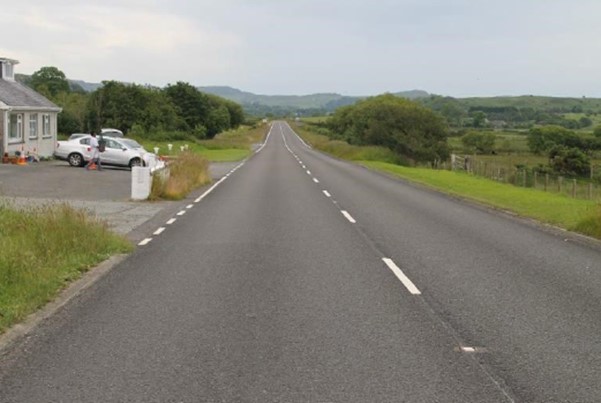Miah v Jones and Aviva Insurance

Citation: [2024] EWHC 92 (KB)
High Court of Justice, King’s Bench Division – Leeds District Registry
Judge: His Honour Judge Gosnell, sitting as a Judge of the High Court
Background:
The Claimant, Mr. Mohammed Mashuk Miah, was struck by a vehicle driven by Dr. Hayley Jones (the First Defendant) after the Claimant alighted from a bus on a rural road in North Wales. It was dark at the time and there was no street lighting in the area. The Claimant was wearing dark clothing. The Claimant suffered significant head and orthopaedic injuries and became a protected party. He had little or no recollection of the collision.
The Accident
There was little dispute as to the broad facts of the accident, not least as CCTV was available from the bus. There was limited dispute as to details such as the precise speed of the First Defendant’s vehicle (though it was within a fairly narrow band) and the precise distances involved.
A photograph of the location appears in the Judgment, as taken by one of the accident reconstruction experts:

Prior to the accident, the Claimant had alighted from a bus that had stopped directly opposite the Madiha Tandoori Restaurant (the restaurant seen to the left of the road), even though this was not an official bus stop. After the bus departed, the Claimant briefly waited and then proceeded to walk across the road from the south side to the north side (from the right of the photo to the left), seemingly with the intention of visiting the restaurant. In so doing there was a collision with the First Defendant’s vehicle which was travelling easterly (away from the photographer).
The area in question would not have been visible at all to the First Defendant until about 380m before, once she had travelled over the brow of a hill.
The parties’ cases:
The Claimant alleged that the First Defendant was traveling too fast, failed to anticipate that the bus might have been dropping off passengers, should have braked, kept a proper lookout, and used her main beam rather than dipped headlights.
The Defendants (the Second Defendant being the First Defendant’s insurer) argued that the First Defendant was driving at a reasonable speed for the location; that it was not reasonable for her to anticipate that someone would cross the road from behind the bus; and that she reacted as soon as it was reasonably possible once the Claimant was visible.
Judgment:
The factual disputes between the parties were quite narrow, but the court made limited findings of fact. The interpretation of the facts as to negligence was the more important feature.
The court found that the First Defendant was not negligent for driving at just below the national speed limit (60 mph) in a rural area at night.
The court considered whether the ‘hazard’ of the bus should have caused the First Defendant to adjust her driving. The judge ultimately concluded that a reasonably prudent motorist could not have identified the stationary bus as a hazard from the distance at which the First Defendant was initially approaching and that she could not have seen the Claimant in time to prevent the collision. The Judgment takes into account the visibility/ conditions, the speed of the First Defendant’s vehicle, and the actions of both the First Defendant and the Claimant leading up to the accident.
The court considered guidance from Cavanagh J, in Chan v Peters and Advantage Insurance Company Limited [2021] EWHC 2004 (QB), in relation to collisions between cars and pedestrians, including that:
- A defendant will be liable in negligence if they failed to attain the standard of a reasonably careful driver and if the accident was caused as a result.
- The burden of proof, on the balance of probabilities, rests with the claimant.
- The standard of care is that of the reasonably careful driver, who is armed with common sense and experience of the way pedestrians, particularly children, are likely to behave.
- If a real risk of danger emerging would have been reasonably apparent to such a driver, then reasonable precautions must be taken.
- If the danger was no more than a mere possibility, which would not have occurred to a reasonably careful driver, then there is no obligation to take extraordinary precautions.
- Drivers must always bear in mind that a motorcar is potentially a dangerous weapon.
- Drivers are taken to know the principles of the Highway Code.
- Trial judges should be cautious in making findings of fact of unwarranted precision when that was not justified by the evidence, on the basis that treating what could in truth be no more than ‘guessimates’ as if they were secure findings of fact.
- If there are inherent uncertainties about the facts is dangerous to make precise findings. This may well mean that the party who bears the burden of proof is in difficulties. But that is one of the purposes behind a burden of proof; that if the case cannot be demonstrated on the balance of probabilities, it will fail.
- The defendant is not to be judged by the standards of an ideal driver, nor with the benefit of ‘20/20 hindsight’.
‘Coincidence of location fallacy’
The ‘coincidence of location fallacy’ refers to a situation where a defendant’s earlier negligence places them at a location where an accident occurs, but that earlier negligence is not causative of the accident itself.
It was suggested in this case that if the First Defendant had driven more slowly along the stretch of road from the brow of the hill to the accident location, then the Claimant would have been able to cross the road without incident.
The concept of ‘coincidence of location fallacy’ was explained by Jackson LJ in Gray v Botwright [2014] EWCA 1201. He illustrated it with a hypothetical scenario where a motorist drives at excessive speed between two points but then slows down to a proper speed and is involved in a collision that is not their fault. The motorist’s earlier speeding did not cause the collision, even though it led to them being at the collision point at that time. The fallacy lies in incorrectly attributing the cause of the accident to the earlier negligent act, rather than to the circumstances prevailing at the time of the accident.
In this case, the Claimant argued that the duty of care started when the First Defendant came over the brow of the hill and saw the bus, which continued until the impact occurred. The Claimant’s case was that a reasonably prudent driver would have contemplated the risk that someone might have alighted from the bus to cross the road and would have slowed down accordingly, and so the fallacy did not arise.
The court found that expecting the First Defendant to recognize the presence of a stationary bus from 370 – 390 meters away at night as a hazard represented a counsel of perfection and was not a reasonable expectation for a prudent motorist.
The court concluded that the First Defendant did not fall below the standard of a reasonably prudent driver by failing to identify the presence of a stationary bus from such a distance or to infer that a passenger had alighted and was about to cross the road. By the time that the First Defendant was able to identify the vehicle as a bus, there was no reason to regard it as a hazard. The Claimant himself could not be identified in the dark, wearing dark clothing.
Therefore, the court did not find that it needed to consider any potential ‘coincidence of location fallacy’ further in this case, since there was no negligence at any stage by the First Defendant.
Conclusion
This is an interesting case, with the facts that were broadly agreed. What was in dispute was whether the largely agreed facts gave rise to negligence. It is a useful example of how a court may approach liability in road traffic accidents involving pedestrians.










